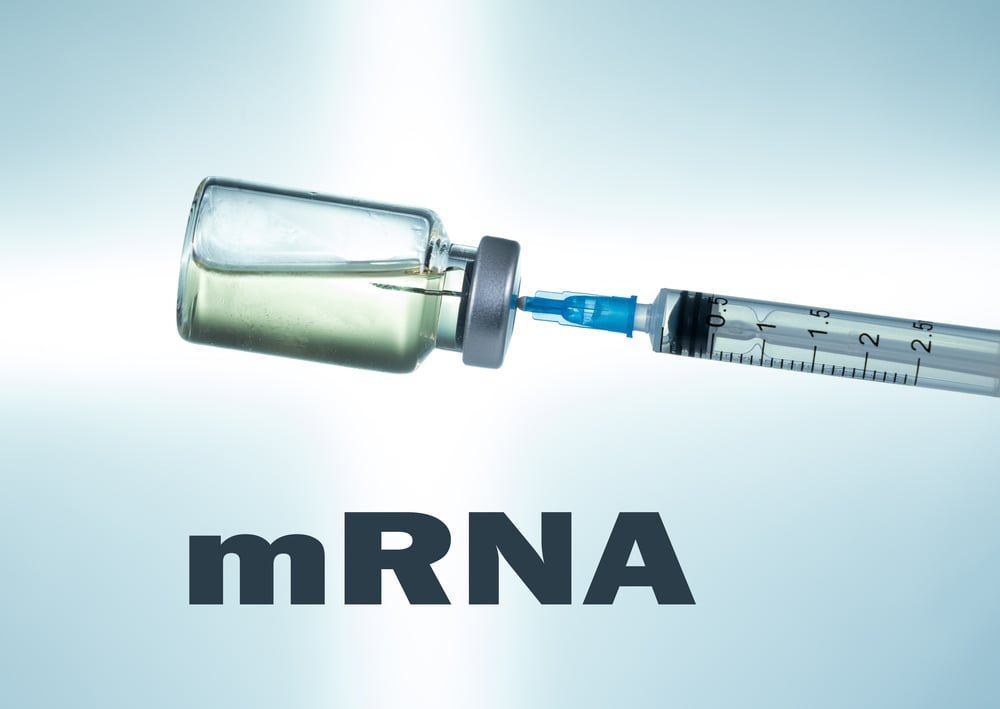By Dr. Myriam Mendila, chief development officer of CureVac
World Immunization Week is April 24-30, and it’s an important week to highlight the action needed and to promote the use of vaccines to protect people around the world, of all ages, against infectious diseases.

World Immunization Week aims to promote the use of vaccines to protect people of all ages from diseases and deliver immunization. Although vaccination is one of the most effective public health interventions to prevent, control and even eradicate diseases, and has made one of the greatest contributions to human health and life expectancy, there continues to be a global need for new and improved vaccines available to everyone.
Over the past 60-70 years, great strides in vaccine development have been made and delivered enormous benefits to human health. With the application of the mRNA technology to combat the devastating impact of coronavirus infection being one of the most recent, can this technology have a similar impact on other diseases?
Dr. Myriam Mendila, chief development officer of CureVac, explains how we are likely to have just scratched the surface on how mRNA vaccines have the potential to improve outcomes for many other diseases beyond COVID-19.
The global coronavirus pandemic brought about unprecedented cooperation and collaboration to address this significant global threat. Scientists around the world looked for a technology that could be rapidly adapted into a vaccine and advanced into development.
Luckily, mRNA was poised and ready to make, what we now know, a monumental impact on the severity of coronavirus infection and enabled the world to return to normal.
mRNA not a new technology
Unlike the general perception of being a new technology, the use of mRNA for medical purposes has been in development for about 20 years, with multiple clinical studies conducted, including its use as a vaccine for infectious diseases and cancer. Ever since the founder of CureVac, Dr. Ingmar Hoerr, was able to show that mRNA could be stabilized and introduced to the body without being destroyed, extensive research has been conducted to design an optimal mRNA backbone that could possibly be adapted for therapeutic use.
mRNA itself is unstable and rapidly broken down by enzymes in the body. To solve this challenge, lipid nanoparticles (LNPs) are typically used to provide a protective coating, enabling efficient delivery of the mRNA into cells.
Following the sequencing of the coronavirus spike protein, which grants the virus entry into human cells, an mRNA strand coding for that given spike protein could be tailored to create a vaccine. Following administration of the mRNA vaccine, an immune response is triggered against the coronavirus spike protein. The vaccine can be generated in days, which demonstrates the power and flexibility of the mRNA technology. Not only is this important for future pandemic preparedness, but also in responding to other infectious diseases that continue to impact global health, including seasonal influenza, respiratory syncytial virus (RSV), malaria and many others. The advantage of mRNA technology is that it lends itself extremely well to combining different antigens into one vaccine. Already, there are studies with multivalent vaccines combining influenza and COVID-19, RSV and COVID-19 as well as the potential to include all three into one vaccine.
In some respects, the clinical development timelines for mRNA technology to obtain regulatory approval for use in a given disease, and then entry into the market, are very similar to those of other technologies in the same indication, such as other vaccine types, monoclonal antibodies, RNA interference, antibody-drug conjugates, etc. The difference during the pandemic, was the condensed clinical development timeline for vaccine product development and the unique situation where many stakeholders joined forces to achieve a common goal. Many people are now wondering, if this can be achieved with COVID-19, why can’t a similar effort work with other diseases?
Still early days for mRNA vaccines
Despite a couple of decades of research, in many respects, we are still in the early days of understanding the potential of mRNA for medical use. Following COVID-19, evaluating the impact that mRNA can have on other diseases is still in its infancy. The development of new generation COVID-19 vaccines was a great place to start, as well as expanding the technology into influenza, RSV and other respiratory diseases. But the real indicator of the impact that mRNA can have on human health will be success in other major therapeutic areas. Most companies developing mRNA technology are also looking at oncology, including at CureVac, which was the original focus of the company on founding. The concept of developing a vaccine for cancer isn’t new, but development of an effective product has been elusive.
In oncology – like with prophylactic vaccines for infectious diseases – a cancer vaccine teaches the immune system to recognize cancer cells and kill them. As cancer cells are so close to normal healthy cells, this has proven very difficult and can only be achieved by mimicking specific proteins found on the surface of cancer cells.
Over the last decade, major technological advancements, such as next-generation sequencing, have been made that enable precise data from patient tumor samples to be extracted, including the identification of point mutations that give rise to tumor specific antigens that can only or mostly be found in tumor cells and so serve as targets for cancer vaccine candidates. With the ability to sequence the entire exome (only protein coding sequences of the genome) of every patient, the inventory of genomic changes in a tumor can be seen. This information provides the foundation for using mRNA technology encoding for specific tumor antigens as the basis for cancer vaccine development and hopefully the success that previous technologies have not achieved.
This approach is now beginning to show potential. Earlier in April at the American Academy for Cancer Research (AACR) annual meeting, Merck and Moderna presented encouraging clinical data using their mRNA cancer vaccine plus Keytruda in the treatment of early melanoma, and further data in other cancer settings are eagerly awaited. While the development of mRNA cancer vaccines based on the information from whole exome sequencing is advancing towards phase III clinical trials, technology is already progressing to the next stage. Whole-genome-sequencing, combined with short as well as long-range RNA sequencing, has the potential to provide an innovative approach for broader cancer antigen discovery, enabling the detection of the full inventory of genomic alterations in a given tumor as the basis for a cancer vaccine.
Reaching the patient
The successful development of a vaccine in general, regardless of disease setting, is a huge achievement but is only the beginning. It then needs to reach the patient. Despite many advances, the distribution of new vaccines globally, remains a challenge. Traditional vaccine production entails multiple steps, from manufacture of drug substance to fill & finish, as well as the logistics needed to ship the product to the point of need.
During COVID, there was the additional challenge of needing to keep the vaccines in cold storage, at temperatures much lower than the regular cold supply chain. However, this issue has now been partially addressed, enabling easier distribution to all parts of the world.
Once again, the power and flexibility of mRNA in vaccine development could dramatically disrupt the status quo. Manufacturing infrastructure is now in place to rapidly produce new mRNA vaccines at large industrial scale, which could potentially lead to a lower price per vaccine and enable companies to supply low-income countries more cost effectively.
Our colleagues at BioNTech have also taken a more direct approach in Africa to boost manufacturing capacity and supply with the introduction of a container solution. The first containers are now in place in Rwanda.
At CureVac, we are pioneering a mobile integrated and automated platform, a “printer” for the small-scale manufacture of mRNA vaccines and therapeutics in Good Manufacturing Practice (GMP) standard. The printer, which covers all steps for rapid and standardized manufacturing, has been designed to potentially facilitate broad access to mRNA technology and is expected to accelerate the transition of innovative product concepts from science to the clinic across different therapeutic areas, such as new mRNA-based vaccines in pandemic situations, mRNA product production for clinical studies as well as personalized mRNA-based therapies in oncology. The printer is RNA agnostic, meaning that users can produce any RNA sequence, not just those from CureVac.
The development of a new product addressing the current challenges of manufacturing relies on the effective design of the mRNA strand. For example, the 5′ and 3′ UTR elements flanking the coding sequence profoundly influence the stability and translation of mRNA, both of which are critical for the efficacy of vaccines. These regulatory sequences also impact the half-life and expression of therapeutic mRNAs. Technology innovation is enabling the development of a new generation of mRNA vaccines addressing not only the current challenges, but also providing foundations for multiple avenues of future research.
The potential of mRNA is enormous, and it has already changed industry policies. Three main companies with expertise in the development and manufacturing of mRNA are shaping the regulatory environment, and they define new standards for the field to enable continuous innovation. But innovation is not limited to a handful of high-profile companies that have developed or are developing COVID-19 vaccines. Partnering and collaboration has always played a key role in technology development, with start-ups and academia often providing innovation and larger biotech/pharma companies the funding, infrastructure and expertise for development and commercialization. Collaboration was key to the success of mRNA vaccines in COVID-19 and will be essential in the future because the development of mRNA vaccines and therapeutics is not easy.
In summary, we are only just beginning to realize the potential of mRNA vaccines. Over the next several years, we could see the technological advances needed to overcome existing limitations – multivalent vaccines deliverable in a single shot for infectious disease, additional success in cancer vaccines and therapeutic application in other major diseases, such as heart disease, metabolic disorders and neurological conditions.
Beyond vaccines, the mRNA platform could be the next transformation in medicine addressing the unmet needs for many patients around the world.





